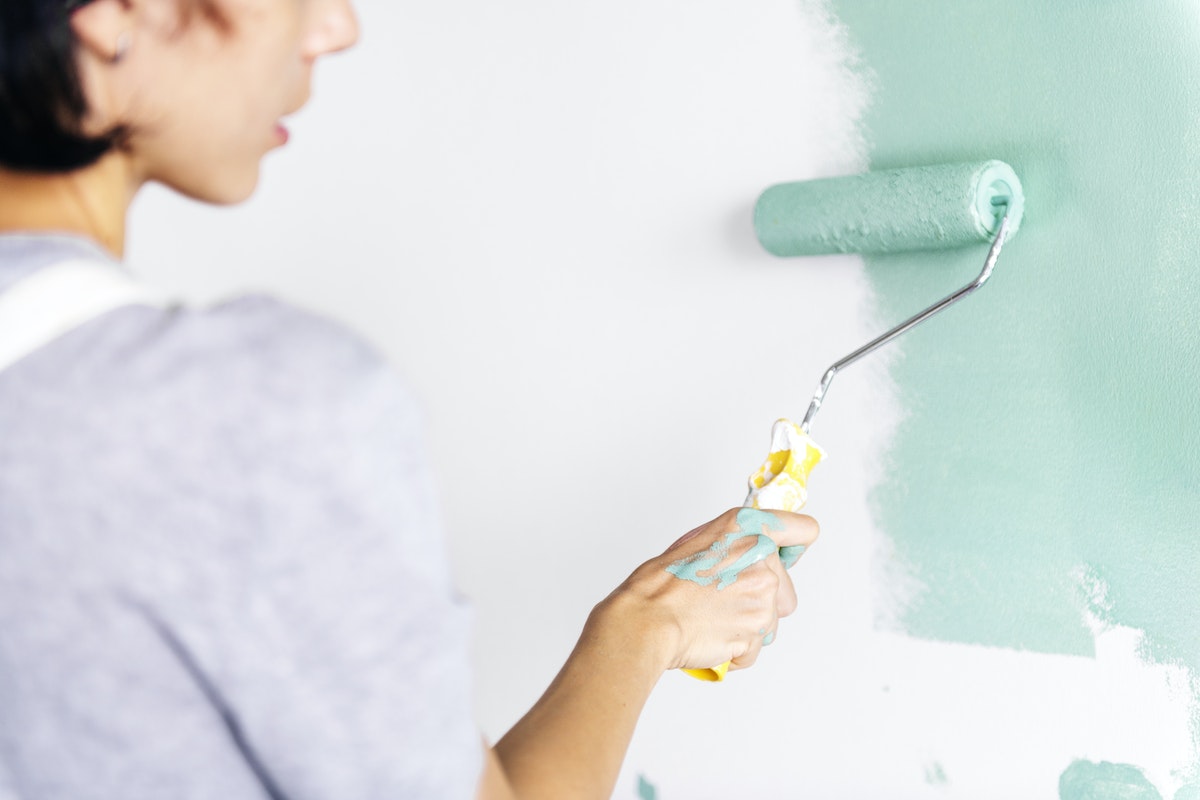Whose Job is That? Determining the HOA’s Maintenance Obligations

HOAs and homeowners each have different obligations with regard to maintaining, repairing, and replacing different parts of the community.
In a condominium building or planned development, the Homeowners’ Association (HOA) and the owners each have different obligations with regard to maintaining, repairing, and replacing different parts of the community. If either the HOA or an individual owner doesn’t properly meet those obligations, it can cause problems for that owner, and often for other members of the HOA as well.
Therefore, it’s important to understand who is responsible for which elements of the community, and what rights you have if the HOA isn’t taking care of its responsibilities.
Types of Areas in an HOA Community
There are three types of areas in an HOA community: separate interests, common areas, and limited common areas. Separate interests are the individual units. In a condominium building, that includes the “airspace” between the unfinished walls, floors, and ceilings of each unit, meaning that the paint on the wall or the hardwood floors are part of the separate interest.[1]
In a townhome community, the separate interests include each individual unit, as in in a condo building, and also include the individual parcel of land on which each unit sits. In a single-family community, the separate interest is each parcel of land and any structures that sit upon it.
The second kind of space, the common areas, includes all those areas that are shared by the members of the community, and to which each member has an undivided equal interest. Common areas include not only areas like a building lobby or swimming pool, but also include things like the roof to a condo building and community landscaping.
Third are the limited common areas, also known as restricted common areas or exclusive use common areas. As an example, North Carolina defines a “limited common element” as “a portion of the common elements allocated by the declaration or by operation of law for the exclusive use of one or more but fewer than all of the lots.”[2]
These are spaces that are outside the boundary of any particular separate interest but that are used by only one (or only a few) of the members of the community. Limited common areas can include balconies on a condo building, telephone wiring inside a unit, door frames, screen doors, air conditioners if dedicated to a single unit, fences dividing two or more yards, and others.
Who is responsible for maintaining which areas?
To avoid disaster, it’s important to perform regular maintenance in your home and community; when something does go wrong, it should be repaired or replaced as quickly as is feasible. That’s hard to do if you’re not sure who is responsible for maintaining which areas.
Some states have laws that dictate which areas in a common interest must be maintained by the HOA, as opposed to the individual homeowners. For example, in California, the Davis-Stirling Act dictates that:
(1) Except as provided in paragraph (3), unless otherwise provided in the declaration of a common interest development, the association is responsible for repairing, replacing, and maintaining the common area.
(2) Unless otherwise provided in the declaration of a common interest development, the owner of each separate interest is responsible for repairing, replacing, and maintaining that separate interest.
(3) Unless otherwise provided in the declaration of a common interest development, the owner of each separate interest is responsible for maintaining the exclusive use common area appurtenant to that separate interest and the association is responsible for repairing and replacing the exclusive use common area.
California Civil Code §4775.[3]
Generally, the HOA governing documents, specifically the Declaration of Covenants, Conditions, and Restrictions (“CC&Rs”), also will include details about who is responsible for maintenance of the common areas. In most jurisdictions, and in most HOAs, the responsibilities will be allocated as they are in California: each individual homeowner is responsible for their entire separate interest, the HOA is responsible for the shared common areas, and the homeowner and the HOA share responsibility for the limited common areas.
For example, if two townhomes share a chimney, the homeowners may be responsible for having the chimney cleaned periodically, and the HOA may be responsible for replacing bricks or mortar, if needed. As another example, an HOA may choose to install awnings on certain balconies to improve the look of the community overall.[4]
The HOA’s duty to maintain the common areas includes an obligation to regularly inspect those common areas, and an obligation to maintain sufficient financial reserves to honor those duties. The HOA relies on the members’ fees to build and maintain those reserves, and how they are spent is part of the HOA’s annual budgeting process. The HOA also is required to investigate any complaints about the common areas in an efficient manner.
When Things Go Wrong
Even when everyone involved acts with the best intentions, disputes or other difficulties can arise. This section will address some of the key maintenance-related issues and how best to address them.
The responsibilities shared between individual homeowners and the HOA are the source of many maintenance-related disputes. It’s easy to understand that a condo owner is responsible for replacing light fixtures inside his unit, and that the HOA is responsible for cleaning the carpet in the lobby of the building, but who is responsible for window shutters on the outside of the building?
As a general rule, the homeowner will be responsible for maintaining the shutters, while the HOA will be responsible for repairing or replacing them, should they need it. But, what if they need painting? Is that “maintenance” or “repair”? The answer may be different in different situations, and in different HOAs.
The best way to avoid these disputes is to have the details set forth clearly in the CC&Rs for the HOA. Otherwise, the HOA and homeowners may find themselves in a difficult disagreement to resolve. If a review of your HOA governing documents shows that they do not include details about who has which obligations with regard to these limited common areas, you may want to raise the issue with the board at a general meeting; it will behoove the HOA and the individual owners both to clarify the documents before any disputes arise.
Damage to Common Area
A second issue that may arise is when an HOA member, or a guest of an HOA member, causes damage to a common area. In that situation, the HOA has a duty to repair the common area quickly, and so may do so on its own. Then, the HOA may be able to charge what is known as a reimbursement assessment against the member.
A reimbursement assessment is a special assessment, charged only to recover the amount it actually cost to repair the damage (or to replace the damaged items, if necessary). It is not a fine, nor it is intended to be punitive; it is simply a charge to reimburse the HOA for the damage.
Association’s Lack of Maintenance
A third issue is when you think the HOA is not properly maintaining an area for which it is responsible. For example, the HOA may have let the landscaping in the community grow wild and out of control. In that situation, you first need to be sure that you understand the HOA’s obligations, by referring to the governing documents.
Then, document what isn’t being done. In our landscaping example, you would need to take pictures of the overgrown bushes and tall grass; ideally, you would include notes and dates to indicate location and time. Next, try to find out why the maintenance isn’t being done. Is there a board member who has neglected her duties, or is the problem with the contractor hired to do the work?
Once you have all the information, you can raise the issue at an HOA meeting, which hopefully will spur the board to act and resolve the issue. If not, your options are limited. You can attempt to remove any board member who is hindering progress, either through a regularly-scheduled vote or, possibly, through special procedures if they are provided for in the governing documents. Your other option is to sue the HOA to require them to act.
Filing a Lawsuit
Before you consider suing the HOA, it is important to note that courts often offer deference to an HOA board’s decisions, and you are likely to be successful only if the board has been negligent in its duty. “The judicial deference doctrine does not shield an association from liability for ignoring problems; instead it protects the Association’s good faith decisions to maintain and repair common areas . . . the essence of an association’s duty to maintain and repair is a duty to act based on reasoned decision-making.”[5]
Thus, you cannot successfully sue the HOA just because you do not like the way in which they trim the bushes; rather, you will have a likelihood of success only if the HOA has completely shirked its responsibility to trim them altogether.
Conclusion
As with most things related to homeowners’ association, the key to understanding the maintenance responsibility in an HOA-ruled community is to review the governing documents which should, if properly written, clearly define which areas the HOA has authority over.
But as a general rule, if it’s inside your condo or townhome, or on your single-family property, it is solely your responsibility; if it’s used by everyone, it’s the HOA’s responsibility; and if it’s used only by you (or only a few people) but outside your unit, it probably is a shared responsibility.
Footnotes:
[1] See, e.g., Bd. of Dirs. of Queens Towers Homeowners’ Assoc. v. Rosenstadt, 214 N.C. 162 (2011), quoting the HOA Declaration as defining a “unit” as “the space bounded by the undecorated and/or unfinished interior surfaces of its perimeter walls, load bearing walls, lowermost floors, uppermost ceilings, windows and window frames, doors and door frames.
Each unit includes both portions of the building within such boundaries, and the space so encompassed, including without limitation the decorated surfaces, including paint, lacquer, varnish, wallpaper, paneling, tile, carpeting and any other finishing materials applied to interior walls, doors, floors and ceilings, and interior surfaces of permanent walls, interior non-load-bearing walls, windows, doors, floors and ceilings.
[2] N.C. Gen. Stat. § 47F-1-103(18) (2015).
[3] Civil Code §4775. HOA and Owner Maintenance Responsibilities.
[4] Bd. of Dirs. of Queens Towers Homeowners’ Assoc. v. Rosenstadt, 214 N.C. 162 (2011).
[5] Affan v. Portofino Cove HOA, 189 Cal. App. 4th 930 (2010).



